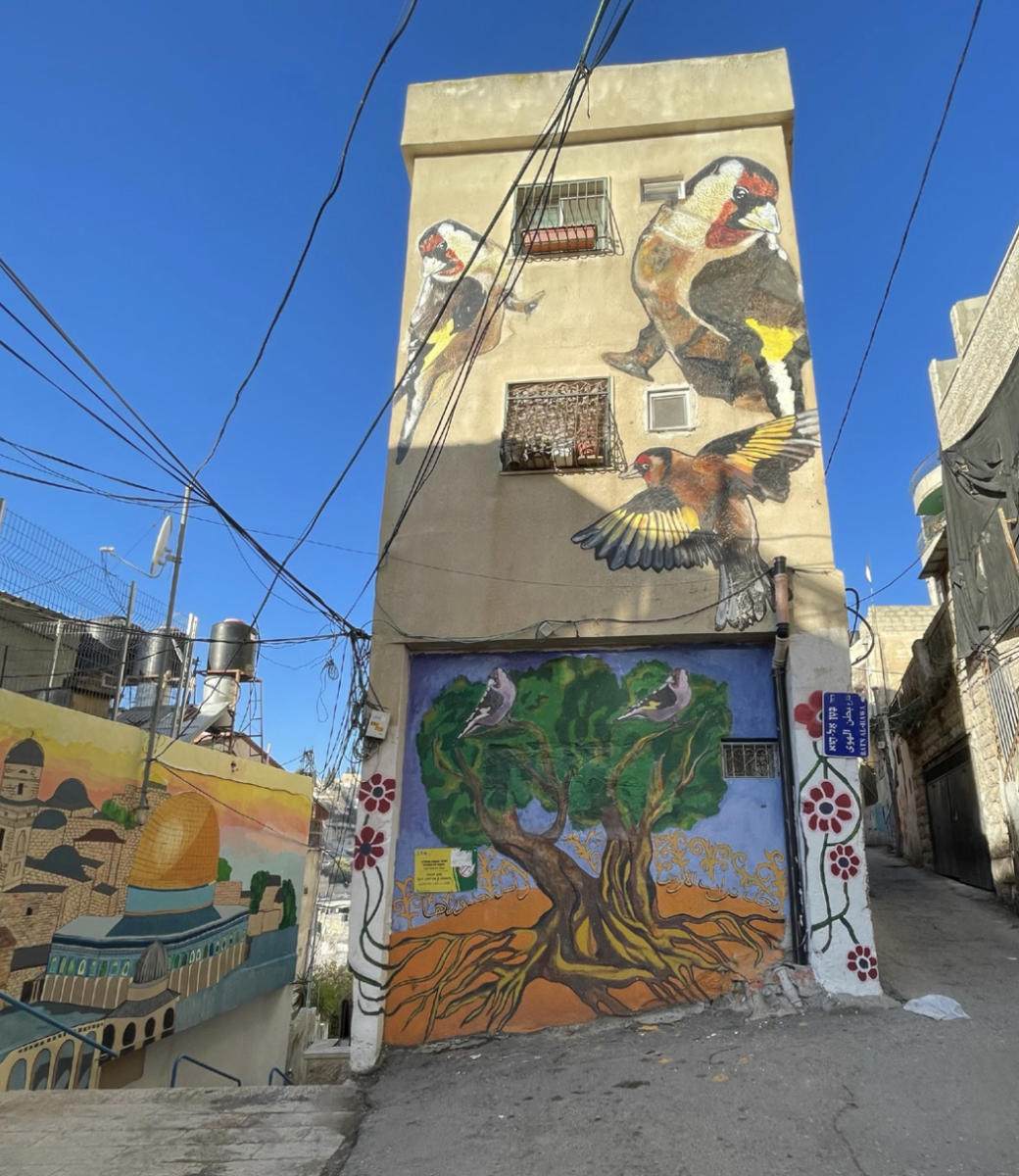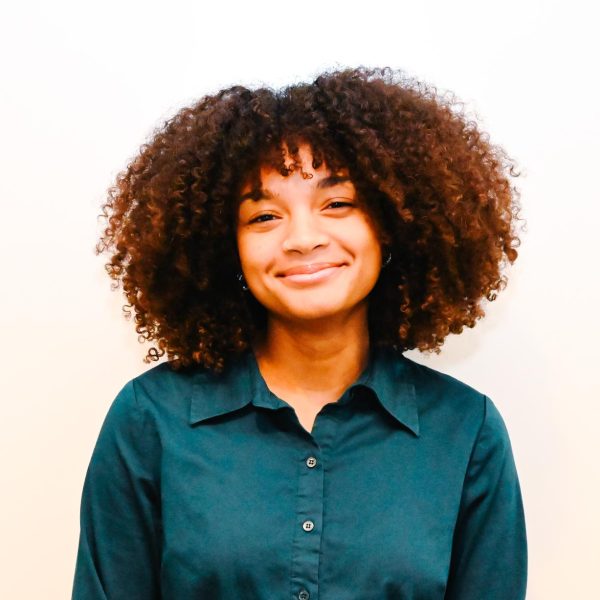Wintertime carries a strong sadness—a loss of hope as the weather gets cooler and the days darker. But December in the desert provides warm sunny days and crisp, cool nights. Almost a year ago, I embarked on the most complicated and heart-wrenching trip of my life: visiting the state of Israel. My mother and I, along with some other members of my synagogue, went on a dual-narrative tour of the state. Our last few days were spent in Jerusalem, the splintered, ancient capital. My time there increased my substantial feelings of discomfort and anger with the clear inequalities in Israeli society. Jerusalem was a pinnacle of all that Israel is: a land that is both spiritually powerful and simultaneously drenched in pain and oppression. I saw two Jerusalems: East and West, unfree and free.
Our time in the city was spent traveling back and forth between East and West Jerusalem. East Jerusalem is a part of the occupied West Bank and was annexed into the state of Israel in 1980. Despite ongoing condemnation from the international community, East Jerusalem and its population are still under the control of the Israeli government. Most Palestinians who live there are considered “permanent residents” on their own ancestral land, as the path to Israeli citizenship is not accessible to all—in fact, only five percent of Palestinians living in the West Bank have received Israeli citizenship, thanks to efforts by the Israeli government to obscure the tedious and contradictory process. (1)
East Jerusalem is home to the Western Wall, called the Kotel, as well as the Church of the Holy Sepulchre and the Al-Aqsa Mosque. These historic landmarks hold significant religious value to all the major Abrahamic religions: Islam, Judaism and Christianity. I was still contemplating our brief visit to Bethlehem in the West Bank when we began our tour of East Jerusalem. Try as I might, I could not process the callous, thick, towering concrete walls that divided occupied Palestine from Israel. Walls are to Israel as words are to this page. They are everywhere, overshadowing, blocking and separating communities. Walls of oppression exist simultaneously alongside walls of history and religion. When you start to notice them, you can never unsee them, or ever misunderstand the purposes that they serve.
As our guide led us through the steep, winding streets of East Jerusalem, I marveled at the intricate structure of the neighborhood. Stunning murals of birds, native flowers and powerful Arabic slogans dotted the sides of homes, displaying the creativity of the residents. As we climbed yet another flight of stairs, I noticed a group of people walking past us. It appeared to be a few mothers with their children. Curiously, they had two men with them who appeared to be bodyguards, armed heavily and eyeing us with suspicion. Our guide suddenly stood up straight, a mixed look of anger and discomfort on his previously smiling face. With a voice resounding with discontent, he informed us that we had just seen some Israeli settlers with their private security. My first reaction was shock. It was not that I was surprised about the existence of illegal settlements in East Jerusalem, but rather that the settlers were given government-funded private security. (2) No one had to ask who the security guards were protecting the settlers from. I felt sick as I watched them gaze at the local Palestinian children who were playing nearby, with intense hate in their eyes.
When we arrived at our guide’s home, I was stunned by the beautiful mural that covered the front of the house. It depicted a stunning yellow sun, its rays radiating into a lush orange sky. As we marveled at the craftsmanship of the paint job, our guide pulled an old, worn piece of paper out of his pocket. He proclaimed that it was the original deed to his home with a voice dripping with desperation and fear. Many of his friends and family did not have the physical paperwork that showed their legal ownership over their homes. Most of them had been forcibly displaced in the Nakba, the ongoing expulsion of Palestinian people from British-mandated Palestine. Not having these documents has prohibited countless Palestinian families from returning home. (3) I sensed the deep, constant fear that he was in every day, always worrying if he, too, would not be allowed to return home.
We continued to walk the streets, and that bubbling, hot anger that had found its way into me days before grew and grew. I kept noticing walls topped with barbed wire and security cameras mounted on houses. A group of little boys approached us, kicking a soccer ball towards one of the teenagers in our group. They all played together for a while, smiling while they passed the ball back and forth. It was a ray of innocence and happiness that cut through the shadow of repression that was cast over East Jerusalem.
We ended our last day with a trip to the Kotel. As we descended into the viewing area, the sun was settling on the weathered stones, making it look golden. It took my breath away—its allure and power were stories I had been told but never seen. I truthfully felt a deep, intense spiritual connection as I stood in front of the Kotel. Finding a quiet area in the egalitarian section, my mother and I donned our talits, Jewish prayer shawls, that we traveled with. We held hands and recited the Mourner’s Kaddish in the memory of my late grandfather. Tears slid down my face as I supplied my mother with amens. I closed my eyes and when I opened them, the pink sky had blurred. Waves of feeling crashed over me: both love and connection, but also anger and discontent. Surrounded by the distant chatter of a thousand voices and the faint smell of smoke, I felt lost and small. Lost because I could not successfully gather my complicated emotions, and small because I had little power over my racing mind. Today, almost a year later, I continue to unpack and examine the lies I have known and the truth that I’ve seen.
My Jerusalem is not the same as others. My Jerusalem—my Israel—as a Jew has been maintained and created by the suffering and disenfranchisement of others. My comfort and safety as a Jew are the result of the unwilling sacrifice of millions of Palestinians. I am allowed—no, encouraged—to say that Israel is my homeland, my sanctuary, when others are barred from doing so. I needn’t worry about state-sanctioned violence, intense questioning or constant surveillance when I travel to or throughout the country. I can just be. The Palestinian people cannot.
SOURCES:
(2) https://law.acri.org.il/en/2014/01/07/ej-guards-hcj/
(3) https://www.timesofisrael.com/in-battle-for-east-jerusalem-property-deeds-are-the-weapon-of-choice/


